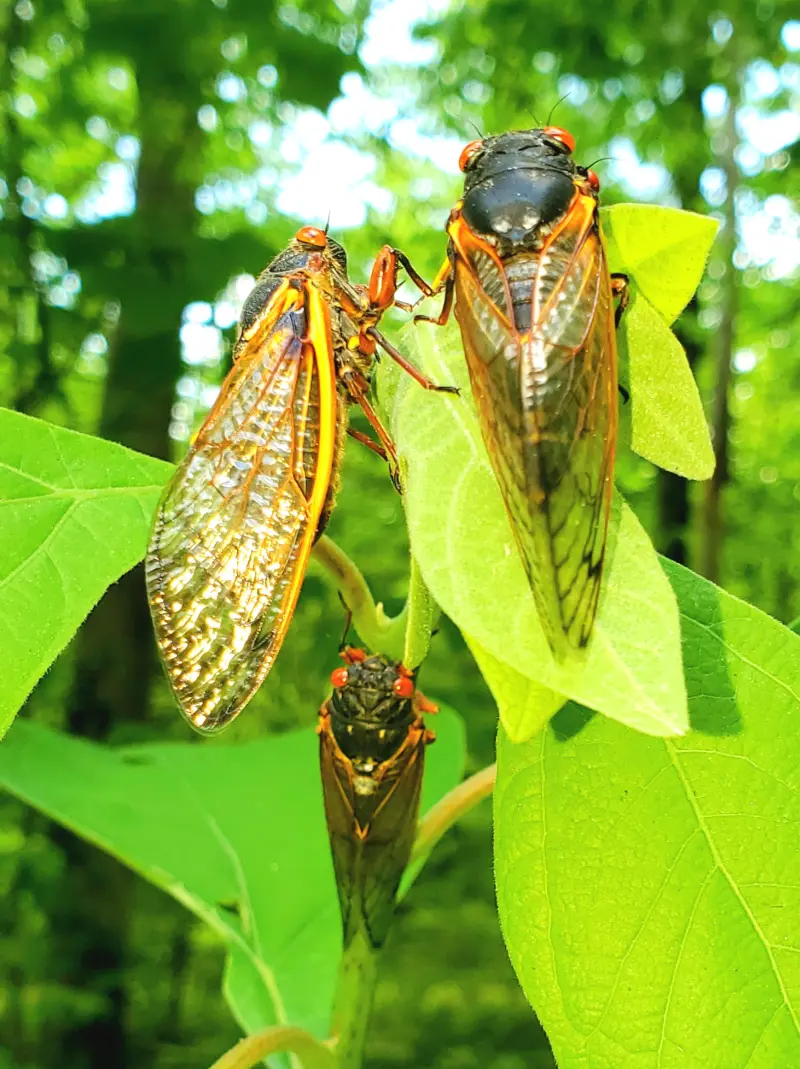Lynn Faust, author of the book Fireflies, Glow-worms, and Lightning Bugs, wrote us in early May concerned that the wild hogs in her area had rooted up and eaten Brood XIV cicadas about to emerge. Hogs are omnivores and are excellent at finding food buried underground, so her assumption makes sense.
She told us that the Turkey Camp on Greasy Creek had hundreds of intact pre and post emergence cicada turrets in 2008, with lots of chorusing. However, in 2025, there were no intact cicada turrets where the hogs plowed up the ground. There were plenty of fragments of turrets, but no adult cicadas or their shells (shed skins).
You can see the hob rooting in Lynn’s photos:


Any impacts to cicada populations, like hog rooting, is interesting to people who study cicadas.
Good news!
Fortunately some cicadas survived, in the hog-plowed areas, and there was no impact in the areas where the hogs did not plow up the ground.
News from Lynn:
Today 10 days later (May 19, 2025) than first visit, completely different!
All previous locations still singing loudly by the 1000s, millions?
Greasy Creek drainage was also singing loudly!
In the plowed up areas, there remained no cicada skins and no evidence and broken mud towers.
BUT, away from the roads much of the forest was intact and apparently plenty made it up into the treetops and they are singing and courting mightily now.
So I wanted you to know the happy ending. Those hogs won a good cicada buffet, but Cicada Brood 14 won the season!
Here are some of Lynn’s photos. All photos in the post are copyright of Lynn Faust.









 Green Grocer Cicada image by Bron.
Green Grocer Cicada image by Bron.









